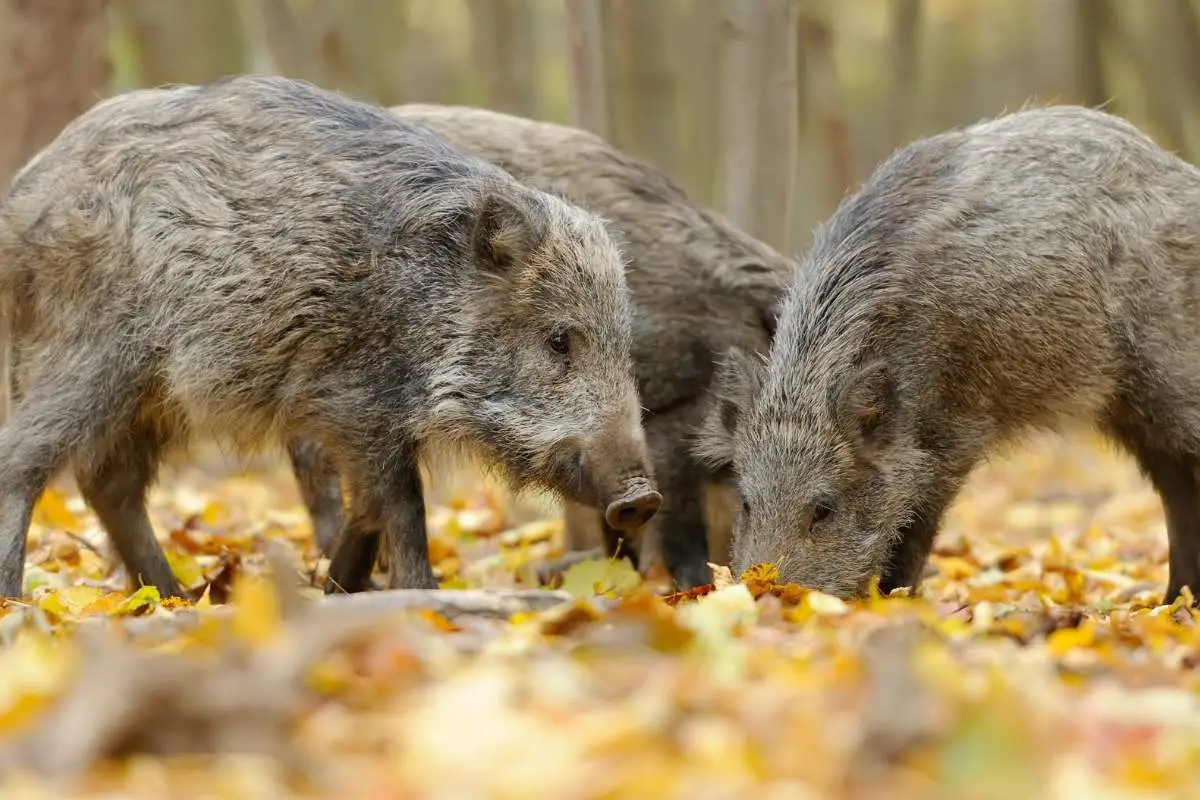
Wild boars are a type of mammal native to Eurasia and North Africa. These animals have also been introduced to North and South America and Australia, where they’re considered to be an invasive species. They can be found in a wide variety of habitats, including forests, savannas, and deserts.
These mammals are omnivores with very diverse diets. Some of the foods commonly enjoyed by wild boars include roots, nuts, berries, earthworms, rodents, and fish. A wild boar can weigh up to 220 pounds and needs at least 4,000 calories of food per day to maintain its energy levels.
Wild boars usually measure between 2.1 and 4.1 ft tall and can be anywhere between 3 and 6.6 ft long (not including the boar’s tail). Although these animals are large, they’re still vulnerable to attacks from predators like wolves and jungle cats. Most boars live between 5 and 10 years in the wild.
Boars are unusual in many ways, but they share traits with various creatures in the animal kingdom. These 15 animals all have a lot in common with the wild boar.
1. Peccaries
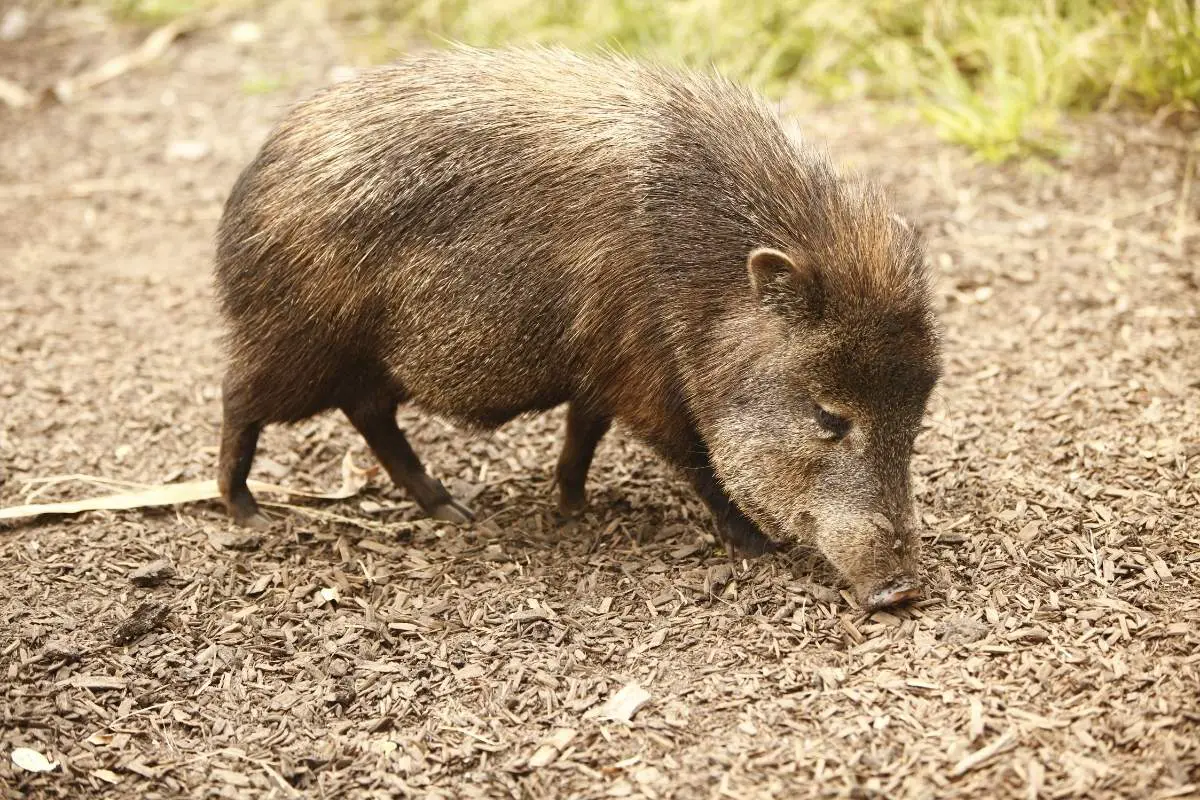
Also called skunk pigs and javelinas, peccaries are hoofed mammals that bear a close resemblance to wild boars. They can be found in North, Central, and South America and in parts of the Caribbean. Like wild boars, these animals thrive in many habitats, including forests, grasslands, and savannas.
On average, peccaries are smaller than wild boars, with most animals weighing between 44 and 88 pounds. Peccaries typically measure anywhere from 2.1 to 4.3 ft long and stand between 20 and 24 inches tall. The animal is sometimes compared to a skunk because of its strong, pungent odor.
Peccaries are omnivores that like to munch on foods like fruit, fungi, and earthworms. They’re very social animals and live in herds of up to 100 peccaries! Most peccaries live between 4 and 9 years in the wild.
2. Bushpigs
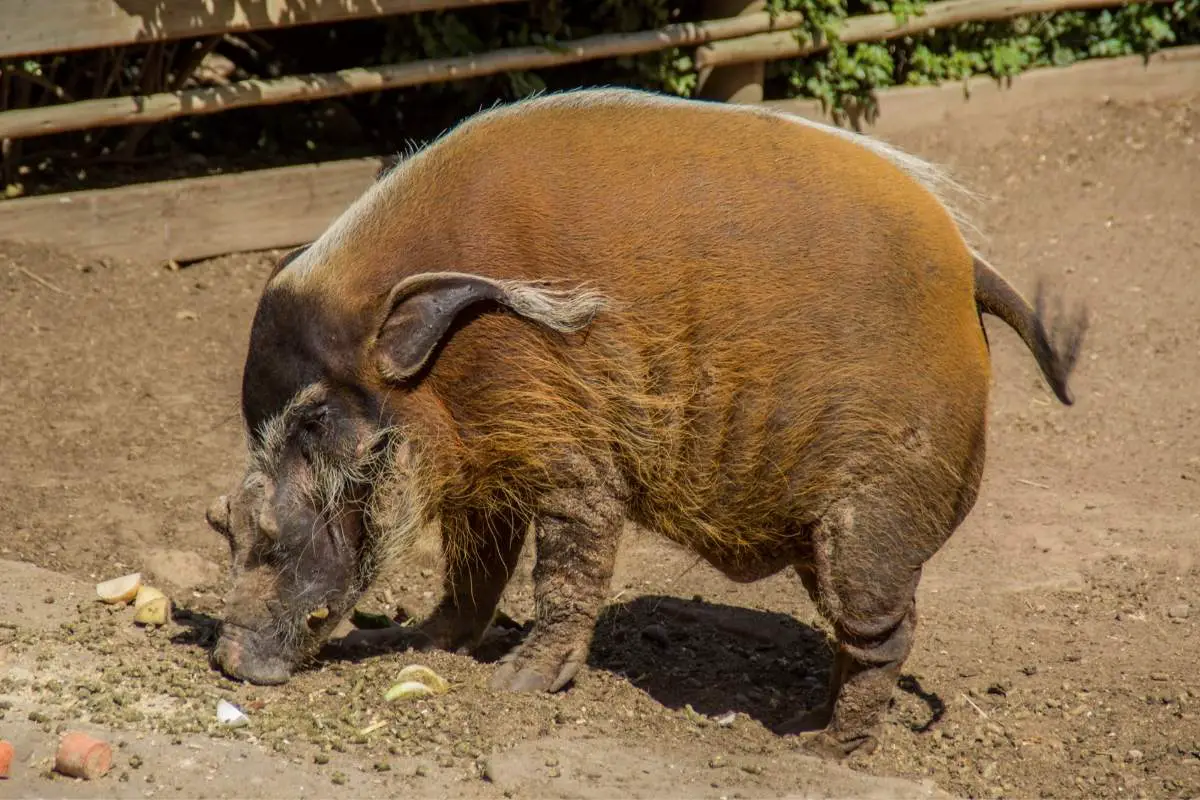
Like wild boars, bushpigs are a member of the big family. They can be found throughout East and Southern Africa, where they’re often drawn to forests and woodland habitats. Bushpigs are mostly nocturnal and tend to be highly aggressive, especially when they believe they’re under threat.
Some bushpigs can grow to be larger than wild boars, with adults reaching weights up to 300 lbs. However, the typical bushpig weighs between 130 and 180 pounds and measures between 26 and 39 inches long. Bushpigs have long hair, sharp tusks, and mask-like markings on their faces.
Although bushpigs are omnivores, they can be very destructive eaters. They’re known to uproot crops and destroy chicken pens in search of food. Since they’re considered to be a nuisance animal, they’re regularly hunted, but they still can live up to 14 years in the wild.
3. Red River Hogs

The red river hog gets its name from its bright red fur. Like wild boars, the animal is a part of the suidae family. The animal can be found across Africa and usually makes its home in damp environments, like damp savannas, rainforests, and along lakes, rivers, and marshes.
While its bright fur makes it stand out from wild boars, the two animals are similar in size, with most red river hogs weighing between 99 and 254 pounds and standing around 22 to 31 inches tall. Although it’s primarily nocturnal, it may show activity during the day, especially when they’re searching for food. This omnivorous mammal eats foods like fruit, tubers, insects, and lizards.
The red river hog can live up to 15 years in the wild, but the species is currently threatened due to hunting and habitat loss. Similar to wild boars, red river hogs can cause damage to crops, causing them to be over hunted. There are reports of red river hogs interbreeding with other pig species, such as the bushpig.
4. Domestic Pigs

The domestic pig is far more docile than the wild boar, but it’s still one of the animal’s closest relatives. Pigs are usually used as livestock and are farmed for their meat. The animal can be found across the globe and is on every continent except for Antarctica.
Similar to the wild boar, the domestic pig is an omnivore with a large appetite. These pigs are usually fed a grain-based diet that includes corn, wheat, and soybeans. The animal is known for its intelligence and can be taught to respond to human cues.
Even though they’re domesticated, these pigs can grow to be very large, measuring from 3 to 6 ft long and weighing between 110 and 770 pounds. Many domestic pigs are killed when they reach maturity, but they can live for 15 to 20 years. Smaller breeds of domestic pigs are sometimes kept as pets.
5. Philippine Warty Pigs
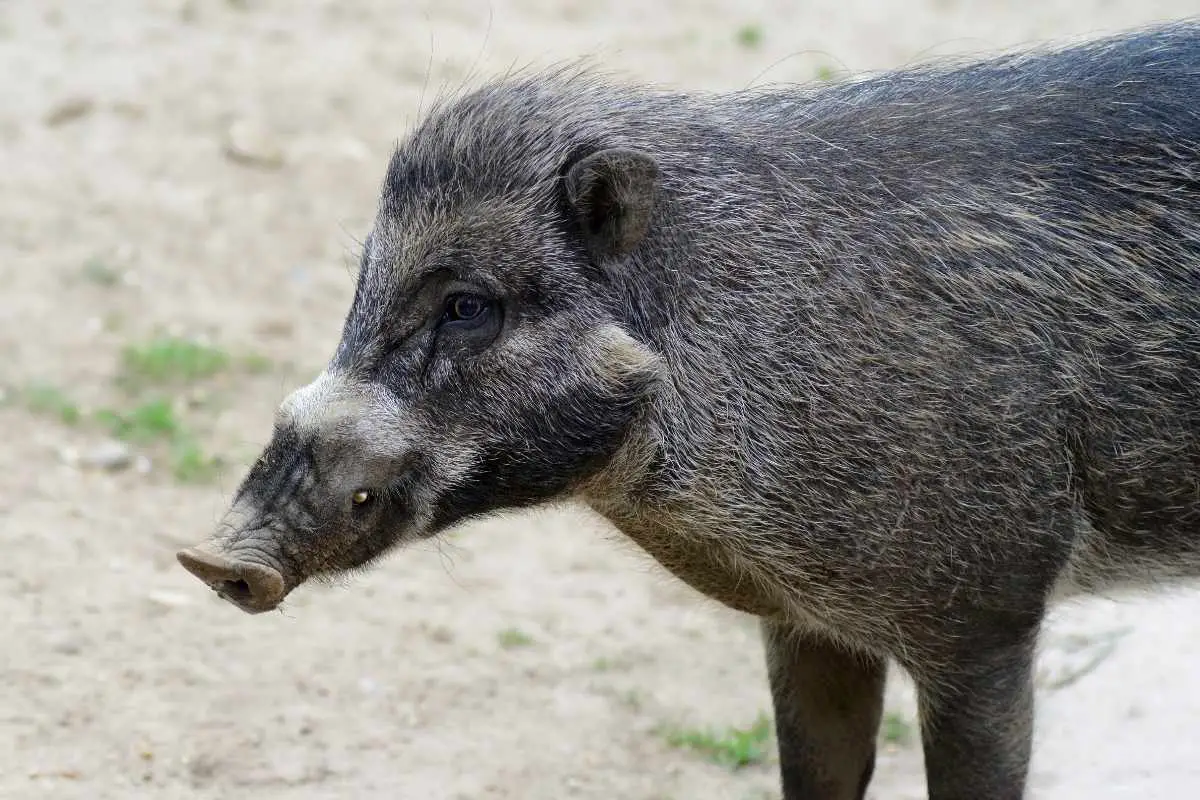
Warty pigs can be found throughout Asia and are especially common in the Philippines. These animals get their name from the wart-like markings they have on their faces. While they used to be found in a wide range of habitats, hunting and urban development has left the animal confined to forests.
These animals are omnivores, just like wild boars are, but they primarily eat a plant-based diet. Some of their favorite foods include fruits, roots, and tubers. They can grow to be very large, weighing up to 440 pounds and measuring up to 4.4 ft long.
Although these warty pigs look similar to wild boars and display similar behaviors, they face many distinct risks. Not only is this species threatened, but it’s been crossbred with the domestic pig, leading to genetic contamination. Despite these threats, it can live for 10 to 15 years in the wild.
6. Opossums
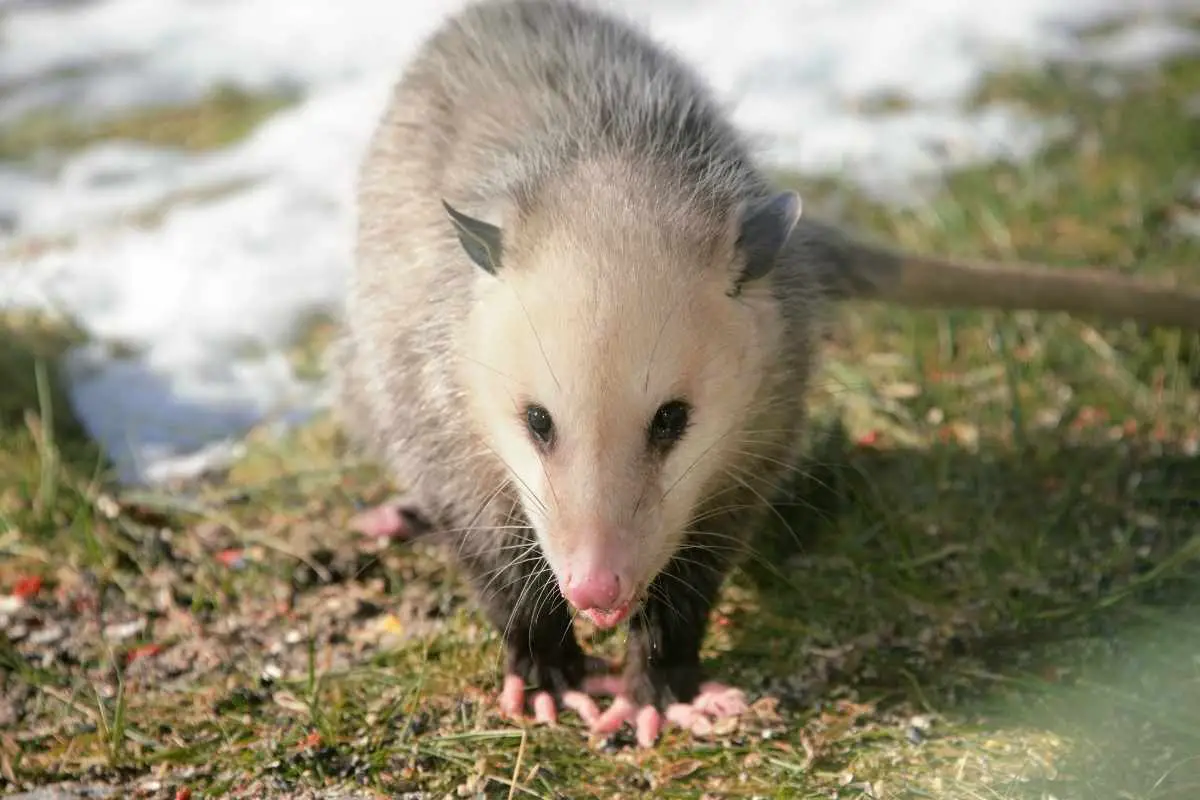
Opossums might not look much like wild boars, but the animals are alike in many ways. Like wild boars, opossums are nocturnal and come out at night to forage for food. Both animals are also known for being destructive because they’ll eat food wherever they can find it.
The opossum is native to both North and South America, but the Virginia Opossum is only found in Canada and the United States. It’s typically found in woodland habitats but can also be found around swamps and rainforests. The animal is an opportunistic omnivore and feeds on grains, fruits, and insects.
Most opossums measure between 6 and 10 inches tall, with a length of 21 to 36 inches. They weigh anywhere from 4 to 15 lbs. Most opossums have a relatively short lifespan, living between 2 and 4 years in the wild.
7. Babirusas

Sometimes called deer-pigs, the babirusa is closely related to the wild boar. It’s found on islands throughout Indonesia, such as the Togian Islands and Sulawesi. These animals are often found in rainforests and prefer to make their home along riverbanks.
The babirusa looks very similar to the wild boar, with large bodies and sharp tusks. It can weigh more than 200 pounds and is usually between 2 and 3 feet tall. The animal also has a long snout, which it to plow through dirt and mark its territory.
Babiursas are opportunistic omnivores that are happy to eat a variety of foods, including fruit, mushrooms, insects, and fish. Unlike most pig species, the babirusa has a two-chambered stomach. It’s rare for the babirusa to live more than 10 years in the wild, but in captivity, it can live for up to 24 years!
8. Tapirs
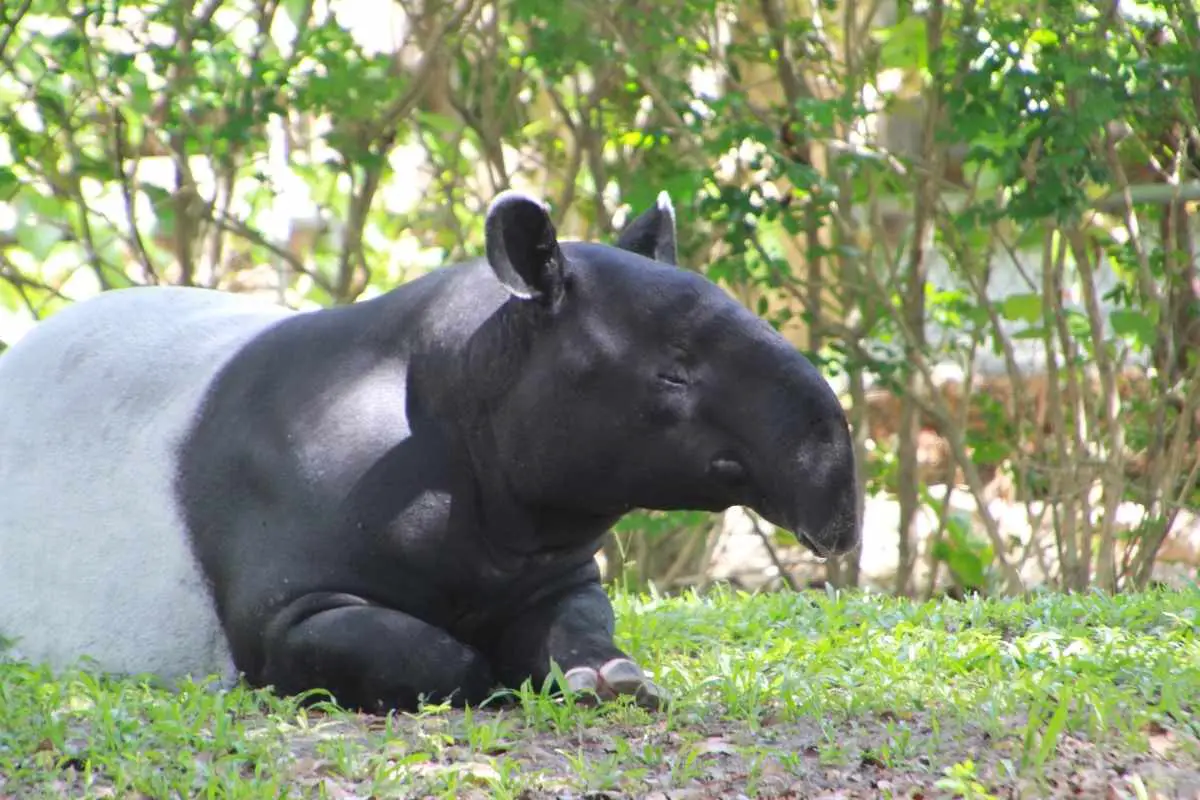
Tapirs are unusual mammals that are often described as pig-like. While they’re shaped similarly to wild boars and have long snouts, the tapir’s closest relative is actually the rhino! The tapir is primarily found in forests and jungles in South and Central America, but one species is native to Southeast Asia.
Unlike wild boars, tapirs are herbivores that feed on fruit and leaves. Although a tapir may have a limited diet in comparison to a wild boar, it does have a large appetite, eating up to 85 lbs of vegetation per day! Tapirs can weigh up to 550 pounds and are usually around 3 ft tall.
Most tapirs are nocturnal, but some species are more active during the day. These animals are sometimes called living fossils due to their primitive appearance. In the wild, tapirs can live for 25 to 30 years.
9. Bornean Bearded Pigs
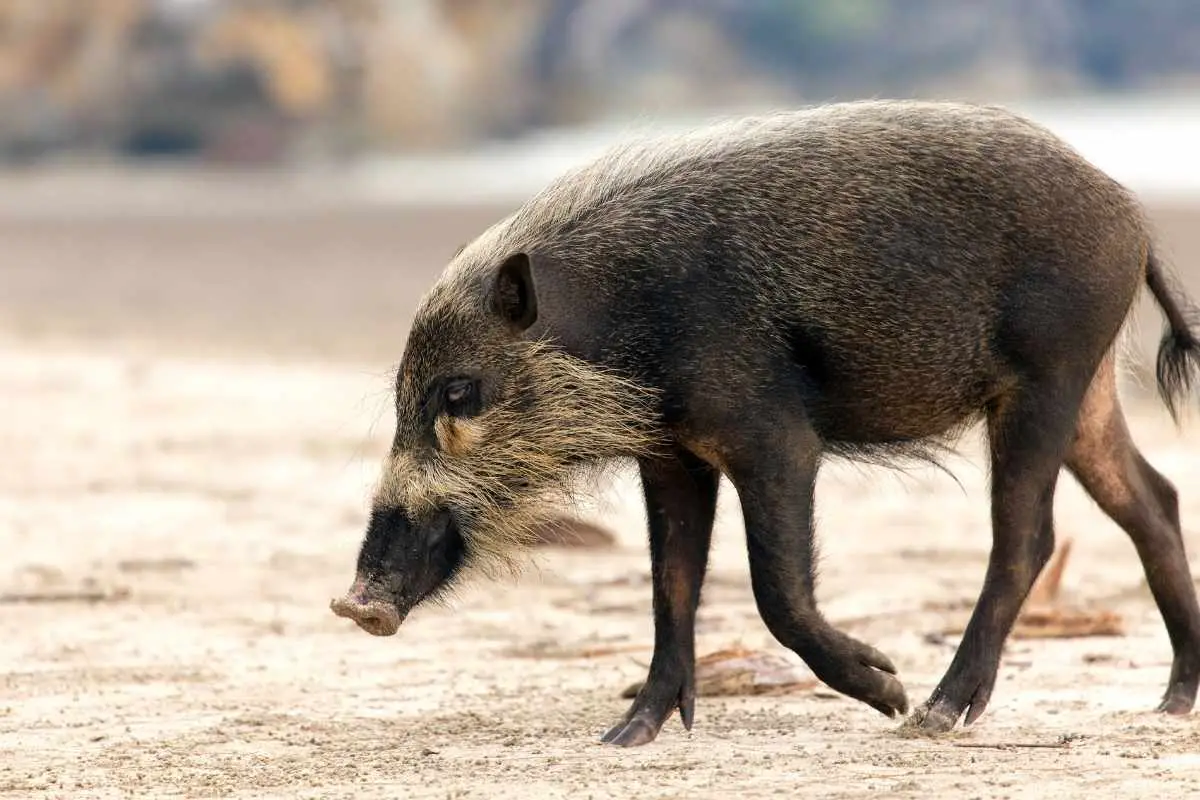
Native to Southeast Asia, the Bornean bearded pig has a similar build to a wild boar, but it also has beard-like hair across its snout. Beneath its beard are sharp tusks that the animal uses to dig through dirt. The bearded pig usually lives in mangrove forests or rainforests.
Like many of the wild boar’s relatives, the bearded pig is an omnivore that loves to eat. Foods that are a part of its diet include fruit, fungi, nuts, earthworms, and even rotting wood! These pigs reproduce year-round and usually live in families consisting of adult pigs and their young.
Bornean bearded pigs are usually between 2.5 and 3 feet tall and weigh anywhere from 90 to 400 lbs. Males tend to be larger and heavier than females. The bearded pig can live for around 10 years in the wild and can live up to 20 years in captivity.
10. Pygmy Hogs
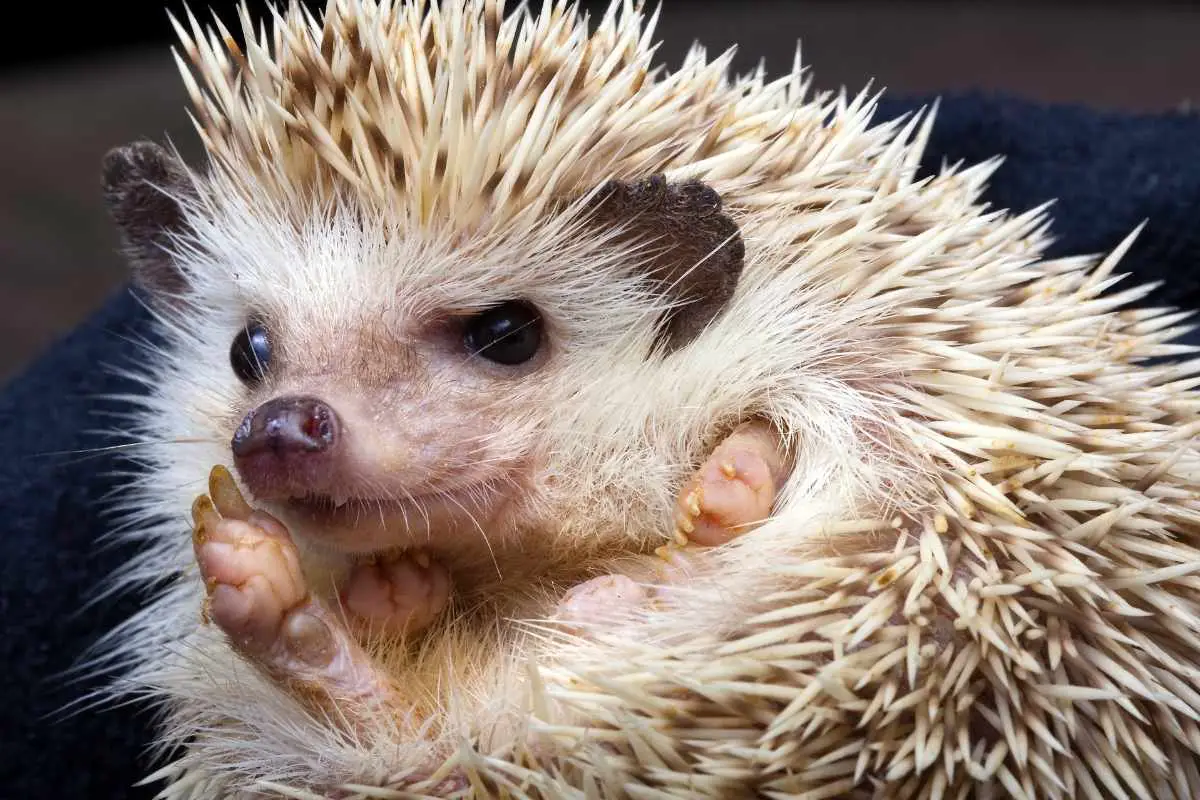
True to its name, the pygmy hog is much smaller than the wild boar. It stands around 8 to 10 inches tall and weighs between 7 and 12 pounds. Although it’s a small animal, it still shares a number of physical characteristics with its larger relatives.
Pygmy hogs are native to India, where they live in the foothills of the Himalayas. They like to make nests by digging trenches with their snouts and lining them with vegetation. These mammals are omnivores that enjoy eating foods like roots, tubers, insects, and small rodents and reptiles.
In the wild, pygmy hogs typically live for around 7 years, though some animals have documented lifespans of 14 years. While these animals used to be widespread, their population has declined significantly in recent years. Today, it’s estimated that there are only around 250 pygmy hogs living in the wild.
11. Dingoes
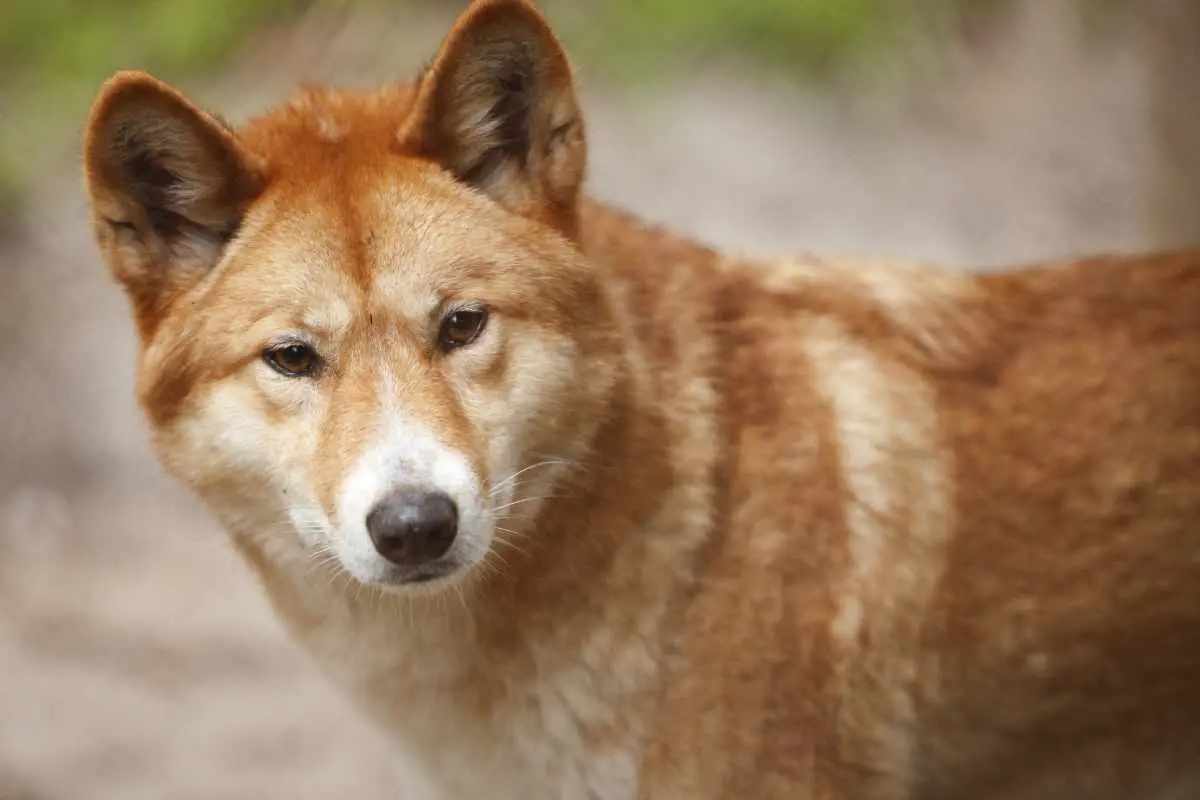
Like wild boars, dingoes are a wild animal that’s closely related to a domesticated species. Dingoes are nocturnal creatures that are native to Australia. While the wild boar has a stout body, the dingo is lean, weighing around 22 to 33 pounds.
Both dingoes and wild boars are known for being destructive, which is why the populations of these animals are culled through hunting. Even though the dingo is a terrestrial carnivore, it eats a varied diet that’s similar to a wild boar, munching on foods like fruits, small lizards, and birds. Dingoes typically stand around 1.7 to 2 feet tall.
The dingo can thrive in many habitats, including lush rainforests, grasslands, and dry deserts. In the wild, dingoes generally live between 7 to 10 years. Most dingoes only breed a single time each year.
12. Warthogs
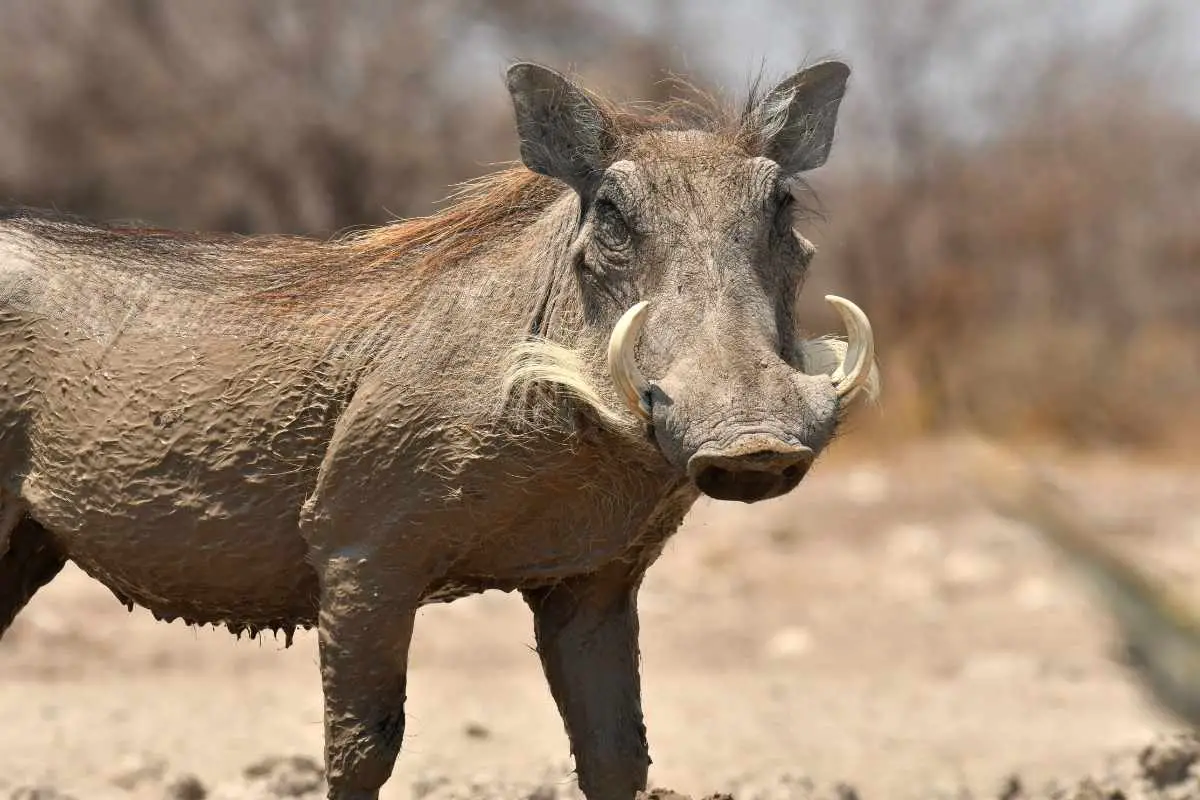
It’s easy to mistake a wild boar for a warthog. Both of these animals have sharp tusks and bodies covered in bristly hairs. The warthog is primarily found in Africa, where it lives in habitats like grasslands, woodlands, and savannas.
Warthogs usually weigh between 99 and 330 pounds and stand around 2.1 to 2.8 feet tall. It’s an omnivorous animal that likes to eat grasses, berries, insects, and carrion. The warthog is an adaptable animal that usually changes its diet based on the food that’s available during the season.
Most warthogs forage for food around dawn or dusk, but animals that live in dangerous areas will search for food at night. Birds are known to ride on warthogs and eat insects off their bodies. On average, warthogs in the wild live for 15 years.
13. Mouse Deer
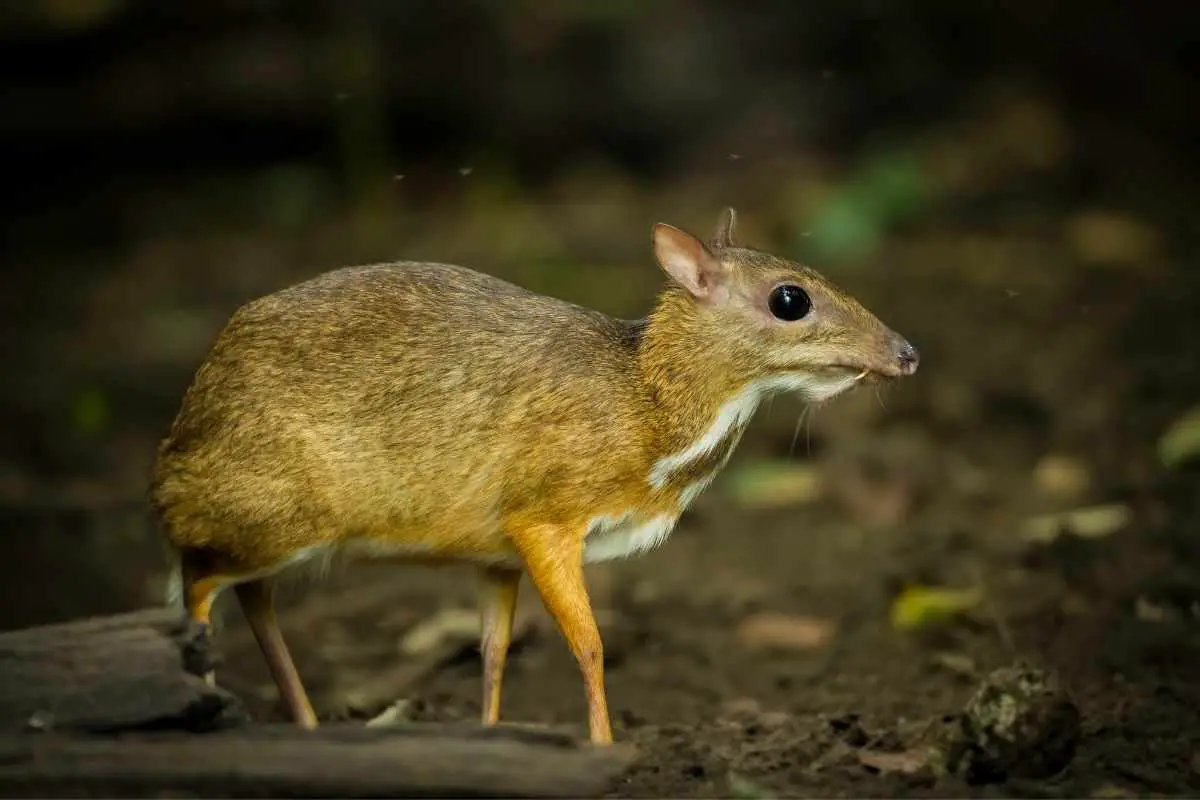
The mouse deer might not look much like an adult wild boar, but it looks very similar to boarlets that aren’t fully grown. These animals are actually distant relatives of the wild boar, and both animals are a part of the Artiodactyla order. As its name implies, this is a tiny animal, with an average height of 12 inches and weights ranging from 3 to 12 pounds.
This animal can be found throughout Africa and Asia. They make their homes in tropical forests and typically live in pairs. While the mouse deer primarily eats leaves and fruit, it’s occasionally known to munch on insects.
Mouse deer have a high mortality rate, and many animals perish before they reach two years of age. However, the species can live for up to 8 years in the wild and may live for even longer in captivity. Like wild boars, the animal is known for its sharp teeth and its primitive appearance.
14. Giant Forest Hogs
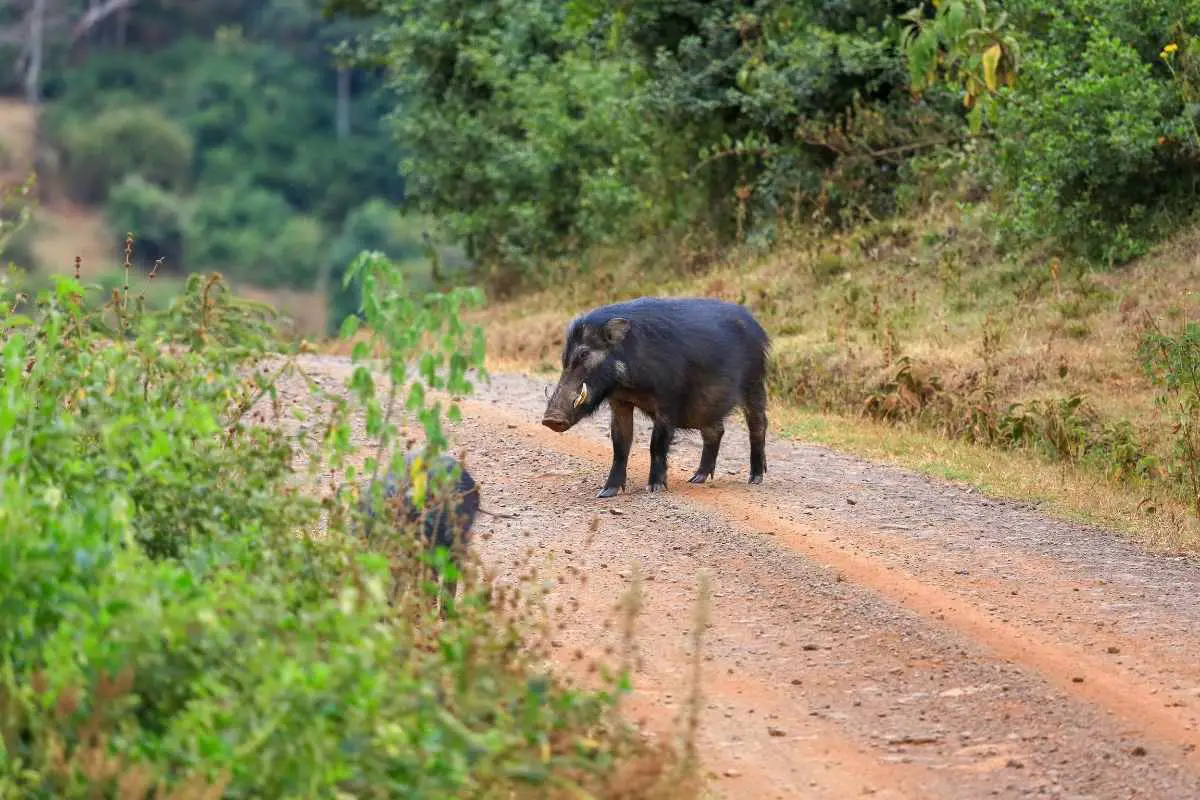
The giant forest hog is the largest member of the pig family, which means it’s even larger than close relatives like the wild boar! These hogs can measure anywhere from 2.6 to 3.7 ft long, and can weigh between 220 and 606 lbs. While they may be bigger than the wild boar, these animals share many physical characteristics, like tusks, pointy ears, and bristly hair.
Giant forest hogs are found in Africa, where they tend to live in wooded habitats like the Congolese forests. It’s typically nocturnal, but if it lives in an area with few predators, it may be active during the day. Unlike most of its relatives, the giant forest hog is a herbivore that likes to eat foods like grasses, leaves, and herbs.
The animal may scavenge when food is scarce. In the wild, most giant forest hogs only live for around 5 years. However, the animal has recorded lifespans as long as 18 years.
The giant forest hog can be a carrier for African Swine Fever, a disease that’s fatal to domestic pigs.
15. Coati
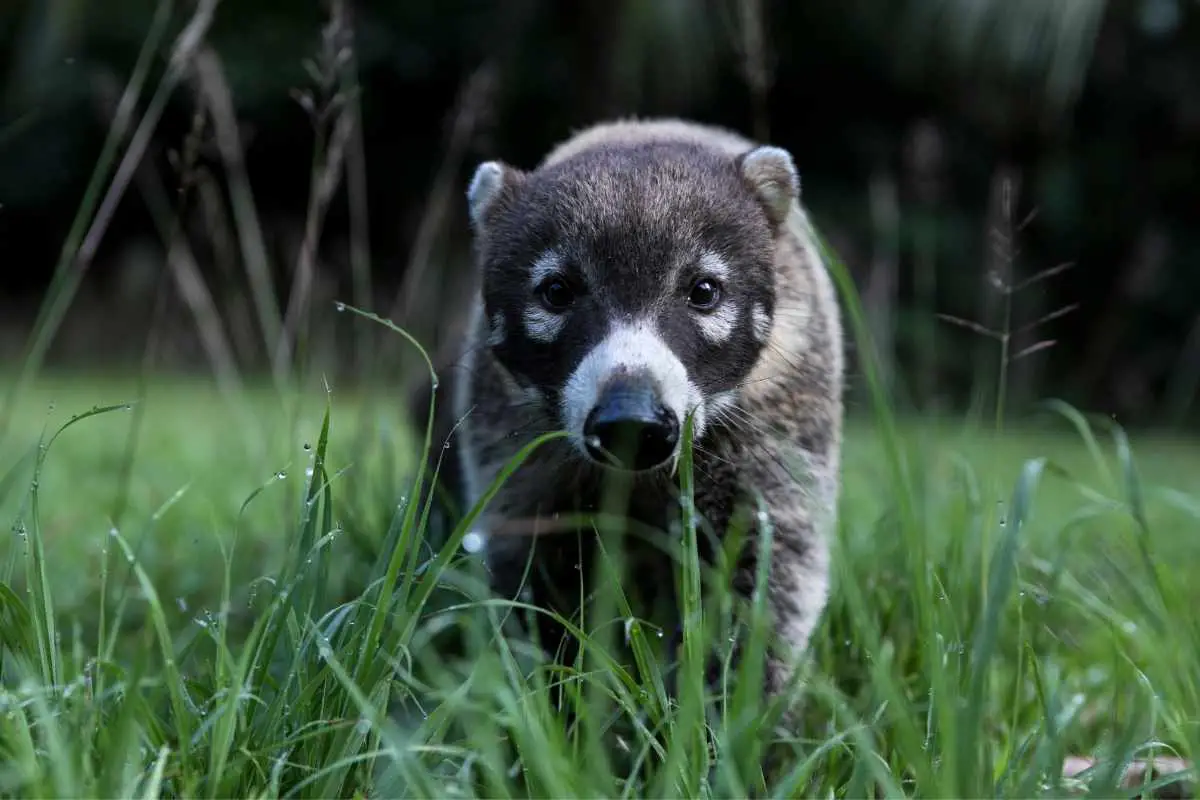
Like wild boars, coati are nocturnal omnivores. While these animals don’t look especially similar, nasuas and wild boars both have long snouts that they sometimes use to dig for food. Coati mostly feed on seasonal fruits and a wide variety of insects.
This animal is primarily found in South and Central America and usually makes its home in tropical habitats. Compared to a wild boar, a coati is quite small, standing between 18 and 24 inches tall and weighing anywhere from 3.1 to 8.7 lbs.
Most coati live for around 7 to 8 years in the wild. With that said, there are some animals with documented lifespans of more than 18 years! Coati are foragers that can be highly destructive, which has caused them to be compared with opossums and raccoons!
